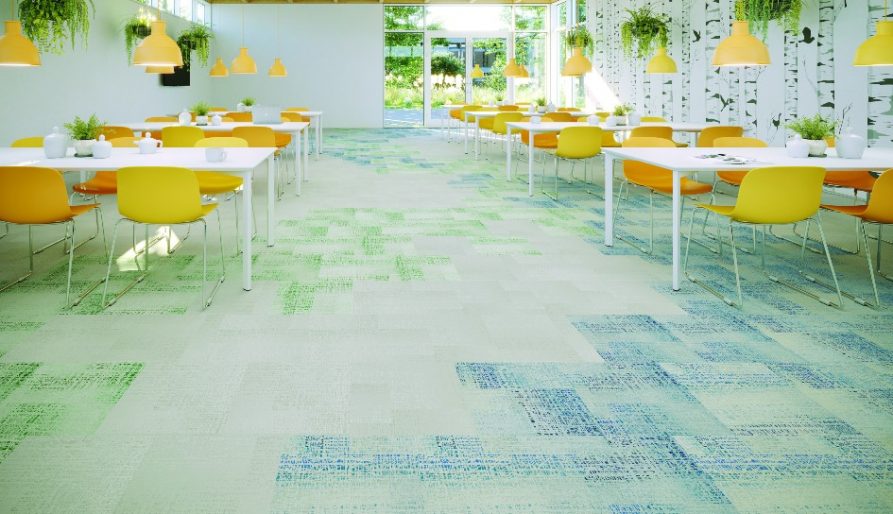Designers and facility managers seeking to create the ideal educational space for students face no small undertaking. Educational environments must meet tough demands. Striking the perfect balance between a welcoming space and an environment that supports academic success is key.
Education projects present unique challenges. Teachers, professors and school administrators may have different ideas for how classrooms, media centres or study areas should be designed to best meet the needs of the students. Likewise, the students themselves may have different preferences for how they study, collaborate, or work best individually.
One important factor that must be considered to meet these various needs is careful consideration of the flooring type. While there are many different surfaces and materials to choose, flooring is an expansive surface extending into rooms, hallways, common areas and other spaces. Whether it’s for a K-12 building or higher education setting, the right flooring foundation can foster learning and creativity, and even help keep students inspired. But, to ensure the right flooring choice is selected, it’s important to ask several important questions.
Who will use the space and what is the intended educational focus?
K-12 students have different needs than college students. As a result, there are different functions and educational activities. Kindergarten teachers may want their students to gather on the floor. Naturally, a soft surface carpet flooring might be a good choice. College students, conversely, might need to collaborate and group up with each other for team projects, so a hard surface where chairs and desks can be easily moved without damaging the flooring would make that easier. When planning and designing for an educational space, it’s critical to know the end user’s activities, the type of experience desired for that space and what kind of flooring choice can best support that.
What are the performance characteristics and/or maintenance needs? And how do those needs lend themselves to a cohesive design?
Carpet in either a modular or broadloom format can be a viable choice. Carpet is softer and offers better sound absorption than other flooring options, which brings acoustical benefits and can provide a nice warm ambience for the room. Because of its softness, it can also be better at preventing injuries that might occur with trips, slips for falls. Broadloom carpet with welded seams and a moisture barrier backing provides excellent stain protection, while carpet tiles offer an easy opportunity to repair small sections of the area without having to replace the entire flooring. Modular carpet also allows flexibility in design for just the right look. When selecting carpet, look for a Texture Appearance Retention Rating (TARR) of at least 3.5 for an education facility.
Another flooring option is Luxury Vinyl Tile (LVT). This flooring type is engineered to withstand extreme foot traffic, is easy to maintain, is often waterproof and can be cost effective, an important consideration for many schools. LVT can often provide a range of design aesthetics, including the ability to create custom looks that can contribute to school branding. To help with sound absorption, some LVT providers offer a specialized underlayment. It’s also important to select a wear layer with 20 mil or higher to assist with the performance needed for the space.
A rubber flooring choice is quiet, durable and comfortable underfoot, an important attribute, especially for teachers or instructors who spend most of their time standing. Additionally, rubber provides an extra level of safety when it comes to falls – for people or manipulatives. Whether it’s a kindergartner tripping over an untied shoe, a teacher falling in the hallway or a biology major dropping an old beaker, rubber flooring allows for better outcomes when people or things hit the ground. Plus, rubber is easy to clean and maintain. It has self-migrating waxes that come to the surface when the floor is cleaned and/or buffed over the life of the product, so there is never a need to wax the floor, thus a lower maintenance cost.
What are the design capabilities of the flooring?
Many schools at the K-12 and college and university levels recognize the power that comes when they connect their brand to their physical spaces. Incorporating school colours in the hallways, the dining areas, or the student union, reinforces a school’s brand with students, faculty, staff and visitors. A flooring solution can support a school’s branding, but it may require a custom carpet with custom colours to match to the school’s logo.
Of course, branding is just one consideration when it comes to design. Many schools will want to use the flooring to assist with wayfinding to direct people from one area to another or to signal to people they’ve entered a new space.
Design should incorporate the intent of the space. For example, does the space need bright colours to foster energy and excitement, such as what might be needed in a K-5 building? Or does the design need to be more “muted” with toned-down colours to help students with focus or concentration. The best floor covering manufacturers should be able to assist with wayfinding, custom design, and other design services to meet a facility’s various design needs.
Today’s educational spaces are dynamic and can present challenges when trying to align design, functionality, maintenance, and budget requirements. But asking the right questions, especially when it comes to the flooring, can mitigate those challenges. Moreover, the right flooring for a space can be a major driver towards safe and comfortable spaces that can also spark student learning, creativity, and inspiration.
Amanda Darley is Mannington Commercial’s Vice President of Marketing.





